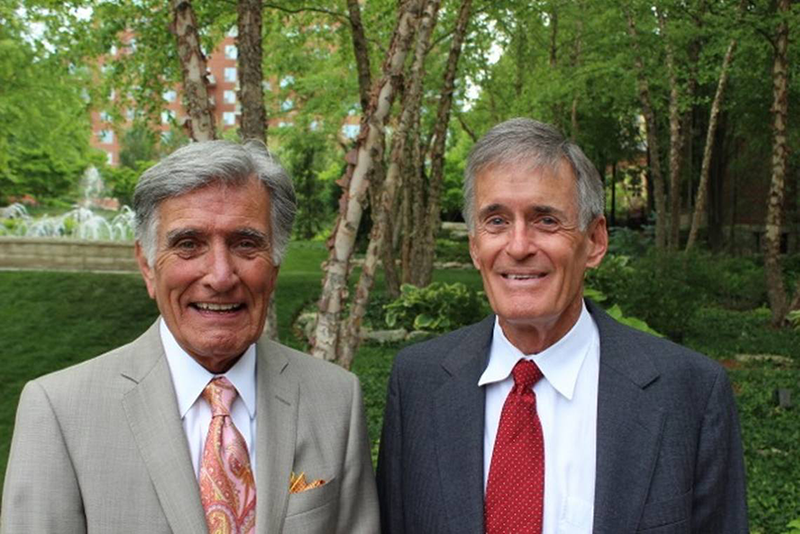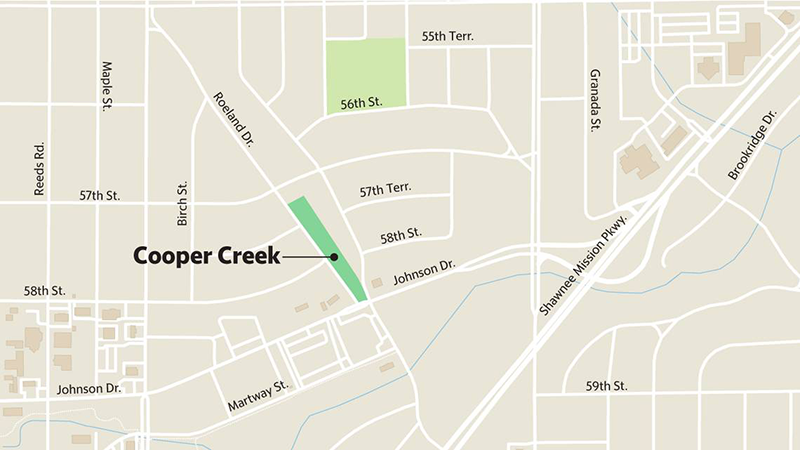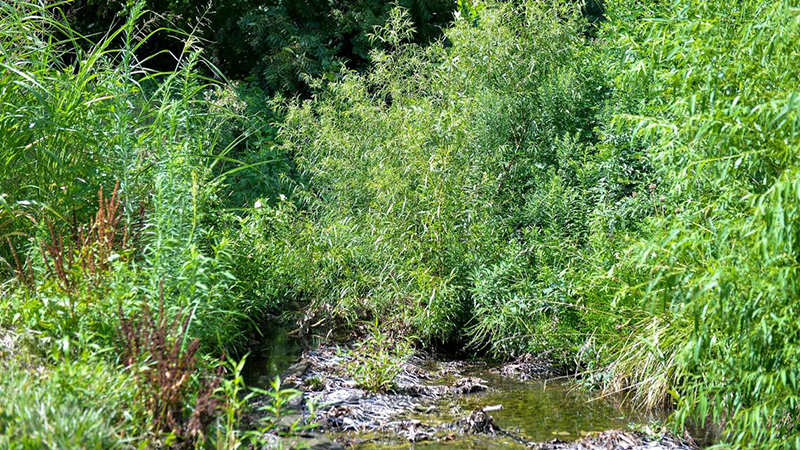All Library locations will be closed Monday, January 19 for Martin Luther King, Jr. Birthday.
“What’s your KC Q” is a joint project of the Kansas City Public Library and The Kansas City Star. Readers submit questions, the public votes on which questions to answer, and our team of librarians and reporters dig deep to uncover the answers.
Have a question you want to ask? Submit it now »
by Dan Kelly
The Great Cooper Creek Mystery has been solved.
Perhaps twice.
Earlier this month, The Star and the Kansas City Public Library asked readers for assistance in investigating the origin of the name of Cooper Creek in Johnson County, and the responses flooded in. Well, trickled in probably is a better description.
The important point is that they included two explanations.
The issue arose when longtime Roeland Park resident Ardie Davis, known locally for his barbecue expertise, was wondering about the name of Cooper Creek and turned to “What’s your KCQ?,” The Star’s series with the Kansas City Public Library that answers readers’ queries about our region.
Davis is part of a group that has taken up the cause of improving Roeland Park’s Cooper Creek Park. The group would like to install a historical sign honoring the park’s namesake.
Our search for an answer generated no evidence that the creek was named after a settler, politician or leading citizen anytime dating back to Johnson County’s formative years in the 1800s. We suggested several possibilities for the name’s origin and asked the public for assistance.
Among the responses were two interesting and convincing scenarios.
Both come from Mission, where Cooper Creek originates before flowing into Roeland Park. Both are tied to folks named Cooper, although they date more than 100 years after the founding of Johnson County.

Candidate No. 1: Dr. Michael L. Cooper
Dr. Michael Cooper grew up in the late 1950s on Birch Street in Mission, just north of what is now Cooper Creek Park, and attended the now-closed Roeland Park Elementary School.
“It seemed like there was always some grading and construction going on along the creek, probably storm water management or some such,” Cooper said in an email, which he wrote in short-story form. “So there were usually big dirt and rock mounds bordering the sides of the creek.”
Perfect for “war games,” he said.
“Half the neighborhood kids would get behind a big hill of rubble and the other half behind a big dirt hill on the other side of the creek. Then we would fervently pelt the ‘enemy’ army with dirt clods and even small rocks, till one side had breached the ‘river’ and crossed over to the enemy side.”
Finally, he said, “I most often gained control of the creek, so it soon became referred to by the combatants as ‘Cooper’s Creek.’” He wonders whether parents learned of the name, and it eventually was made official.

Candidate No. 2: Paul Cooper
Paul Cooper is no longer with us, having died in 1998 at the age of 78. His obituary in The Star said he was a World War II veteran, worked as a funeral director and driver for D.W. Newcomer’s Sons at the time of his death and — here’s the kicker — had been a city councilman in Mission. Cooper’s address was 5413 Reeds Road, which is several blocks northwest of Cooper Creek Park.
Testifying on his behalf is Frank Bruce, who has lived in Mission for more than 82 years and was a friend of Paul Cooper’s.
Bruce is frank about the origin of the creek’s name, and it doesn’t involve kids’ war games. It was more about the creek’s notorious history of flooding.
“Cooper Creek was named for Paul Cooper,” his email said. “Paul fought the city of Mission over the creek that ran at the back of his property. Through Paul’s efforts the city straightened the creek bed and placed it in a box culvert to the city limit with Roeland Park. As a result, Mission named the creek ‘Cooper Creek’ and Roeland Park followed suit.”
Bruce thinks this took place in 1961.
Sounds convincing, especially when you factor in that Bruce is the official historian for Mission.
Laura Smith, Mission’s city administrator, arranged for staff members to examine Mission’s records from the period in question, and they confirmed that Paul Cooper was a city council member from 1953 (the city was incorporated in 1951) through 1961.

Mission created the Cooper Creek Storm Drainage District in 1961, which a Sept. 14, 1961, Kansas City Times story confirms without including a reference to Paul Cooper. There are no mentions of Cooper Creek in the city records or newspapers before 1961, although the creek itself appears on maps dating to the 1870s.
Alas, Mission has no records indicating the creek was named after Paul Cooper. But the circumstantial evidence is persuasive, especially given the primary source.
“Frank is our go-to guy on these kinds of things,” Smith said. “I have no doubt that Frank knows what he is talking about.”
Of course, Dr. Michael L. Cooper knows what he’s talking about, too. And, as he points out, his version definitely has more pizzazz.
“Both explanations are plausible,” he said. “However, I think anyone would have to agree that my story is far more interesting and colorful. If I were a Roeland Park resident, proud of my city’s history, I would much rather relate to interested others my story of grade school adventurers.”
It’s also worth pointing out that he and his friends probably called it Cooper’s Creek before the city made it Cooper Creek.
Who knows, perhaps Mission officials were honoring both the kids and the councilman when they finalized the name.
In the absence of evidence to the contrary, why not?
Submit a Question
Do you want to ask a question for a future voting round? Kansas City Star reporters and Kansas City Public Library researchers will investigate the question and explain how we got the answer. Enter it below to get started.
